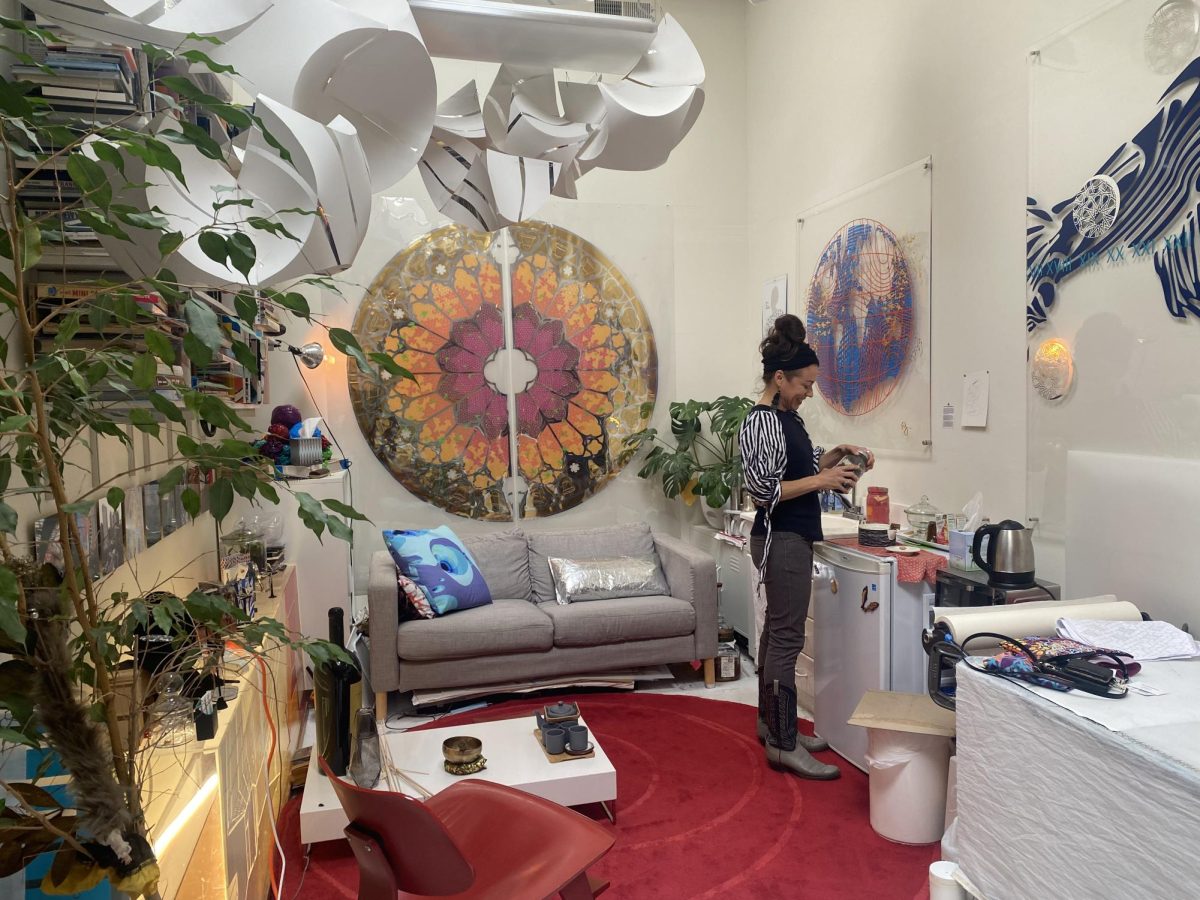
“Don’t have sex, because you will get pregnant and die.”
Coach Carr instilling fear in the teenagers of America in 2004’s Mean Girls is the first thing that comes to mind when I think of a sex education class. But SF State’s Minor in Sexuality Studies takes a different approach when teaching students about intimate relationships, reproduction, and the moral contexts of sex and love.
Megan Stoeckel, a senior at SF State enrolled in a sexuality course to fulfill her segment three requirement. She also learned about various methods of birth control. Before taking sex education classes, she says she pretty much only knew about the pill and condoms as effective methods of birth control; now, she is educated in over twenty different methods to combat unwanted pregnancy.
“Ivy Chen is the best teacher I’ve ever had; You learn and write about things that are applicable to your own sex life,” says Stoeckel about her Contemporary Sexuality course.
When thinking about what the best methods of birth control, it is important to remember that one size does not fill all.
This article will be covering just a few methods to combat unwanted pregnancy.
Contraceptive Sponge
The greatest thing about the sponge is that you can buy a pack of three at your local Wal-Mart for only $9.96. The foam sponge is small, soft, and shaped like Trish’s Mini Donuts from Fisherman’s Wharf. It is inserted straight into the vagina along the back wall against the cervix, acting as a barrier to prevent sperm from reaching an egg. This method will only work against pregnancy for twenty four hours and must be left inside of the vagina for at least six hours after intercourse. There is a chance that the sponge may tear during use, leading to a messy clean up as you fish all the pieces out. Anywhere from 9 percent to 24 percent of woman using this method alone will become pregnant each year.
Pullout Method
A craze seemingly-perfect for college students who are pinching pennies, this method is absolutely free. If you are worried about pre-ejaculation leading to an unwanted pregnancy, the most recent study found that about one-third of the pre-cum samples collected from men contained live sperm. So, if it is a risk you are willing to take, I suggest using apps like Glow and Clue to track you, or your partner’s, menstrual cycle, which will notify you when you, or your partner, are most fertile. Using a condom during these dates can help reduce possible pregnancies when relying on the pullout method.
Vasaigel – Male Birth Control (coming soon)
If human trials run smoothly, a reversible form of male birth control may be here by 2017. Vasaigel will enter the male body through an injection straight into the vas deferences, the tube transfers sperm in anticipation of ejaculation, thus blocking sperm from flowing freely through the urethra. So far, this method has been tested on three baboons and had a whopping success rate; after six months of frequent action with ten to fifteen female baboons, none of them have gotten pregnant. Cameron Shubb, an SF State senior says about the male birth control, “I would certainly use it after it was approved. I feel male birth control takes pressure off women, God knows you all go through a lot, I just try to avoid needles unless I really need them.”
Female Condom
The first time I saw a female condom was three years ago, freshman year, when I got my first brown paper bag full of goodies from the SF State Health Center. In the midst of multi-colored condoms and lubricant was an oversized white package with a hot pink Venus symbol stamped on the front. Confused, I opened up the package and found a large plastic pouch with two rings at each end. To use a female condom, one end is to be inserted into the vagina while the other ring remains outside. Sure it may look unattractive, but unlike many of the other methods, female condoms work against preventing sexually transmitted diseases.
Male Condom
Male condoms are one of the few ways that not only prevent unwanted pregnancy but also work against dangerous sexually transmitted diseases. The list goes on and on from working against gonorrhea, chlamydia and HIV. Free condoms, both latex and non-latex, can be found in the Educational & Referral Organization of Sexuality Center in Cesar Chavez and at the SF State Health Center. If you are up for a treat, a variety of condoms can be found at San Francisco’s Good Vibrations, a sex based shop that carries vegan, studded and glow in the dark condoms. Prices vary from $0.30 to $2.50 per condom.
The Pill
The pill is a hormone based oral contraceptive that alters your body’s ability to get pregnant. This is done by attacking your body with extra hormones which in turn keeps the female eggs from leaving the ovaries and also by thickening the cervical mucus, preventing sperm from traveling through freely. One of the major problems with this method is remembering to take it daily, which can be a struggle for the busy college student. The myPill app, available in the Apple App Store, promises to make sure you will never miss a pill ever again by sending reminders.
There are a wide variety of contraceptive options out there and it is safe to say there is an option for everyone, even if it takes some experimenting. And the best part – there are plenty of places on campus to help you find what suits you best.
The SF State Health Center offers a drop-in birth control clinic where you can quickly refill your prescription on Mondays, Wednesdays and Thursdays. The center offers along with various informational sessions throughout the year.
By joining Family PACT students can also receive free testing and treatment for sexually transmitted diseases. Joining the government program is free for Californians and all birth control options, both for men and woman, are provided at no cost. Their offices at located in side the SF State Student Health Center.
The EROS center, located in the Cesar Chavez Student Center M-109, offers safe sex materials including: condoms, dental dams, lubricants and latex gloves. EROS also offers educational events throughout the year. Their next sex education event, P Spot, will highlight how pleasurable prostate stimulation can be. Charlie Glickman, author of The Ultimate Guide to Prostate Pleasure will be speaking at the event. It will be held on October 8th in the Rosa Parks A-C Student Center at 2:30 p.m.
If all else fails, it is good to know that SF State has an early care and education center where you can drop off your infant while you continue to pursue your education.
Take this survey so we can find out the most popular birth control methods at SF State!






